Abstract
1 Desferrioxamine mesylate (DM) (10 mg kg-1 = 15.24 mumol kg-1) was given by intramuscular injection to five healthy subjects and to six patients with haemochromatosis, after informed consent. 2 Desferrioxamine (DFA), ferrioxamine (FeA), aluminoxamine (AlA), aluminium (Al) and iron (Fe) were measured in plasma, before and 10, 20, 30, 60 min and 2, 4, 6, 8, 12 h after DM injection and in urine collected over a 6 h period the day before and the day of administration. 3 The predominant form in plasma from control subjects was DFA whereas FeA predominated in plasma from patients. In controls, rapid and slow phases of decline in plasma DFA concentrations were found, with half-lives of 1.0 h and 6.1 h, respectively. In the patients, only a single phase of decline was observed, with a half-life of 5.6 h. Total clearances of DFA were 296 ml h-1 kg-1 in controls and 239 ml h-1 kg-1 in patients. 4 The amount of FeA eliminated in urine during 6 h was significantly lower in controls (8.0 +/- 4.6 mumol) than in patients (129.2 +/- 40.0 mumol), with respective renal clearances estimated over 6 h of 516 ml h-1 kg-1 and 1,716 ml h-1 kg-1. DFA elimination was similar in both groups and its renal clearance estimated over 6 h was 91 ml h-1 kg-1 in controls and 85 ml h-1 kg-1 in patients. 5 Since there was no overlap in the 1 h DFA/FeA plasma ratio between controls and patients, this might be useful as an index of iron overload.
Full text
PDF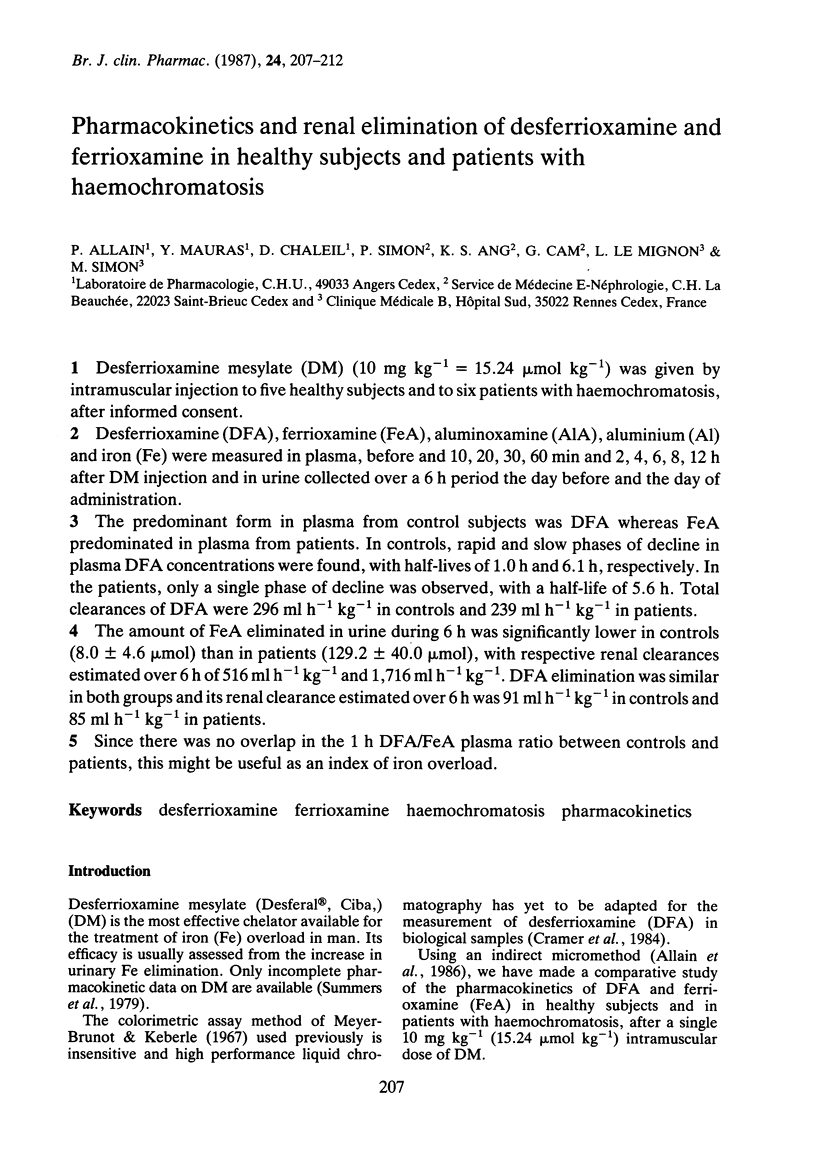
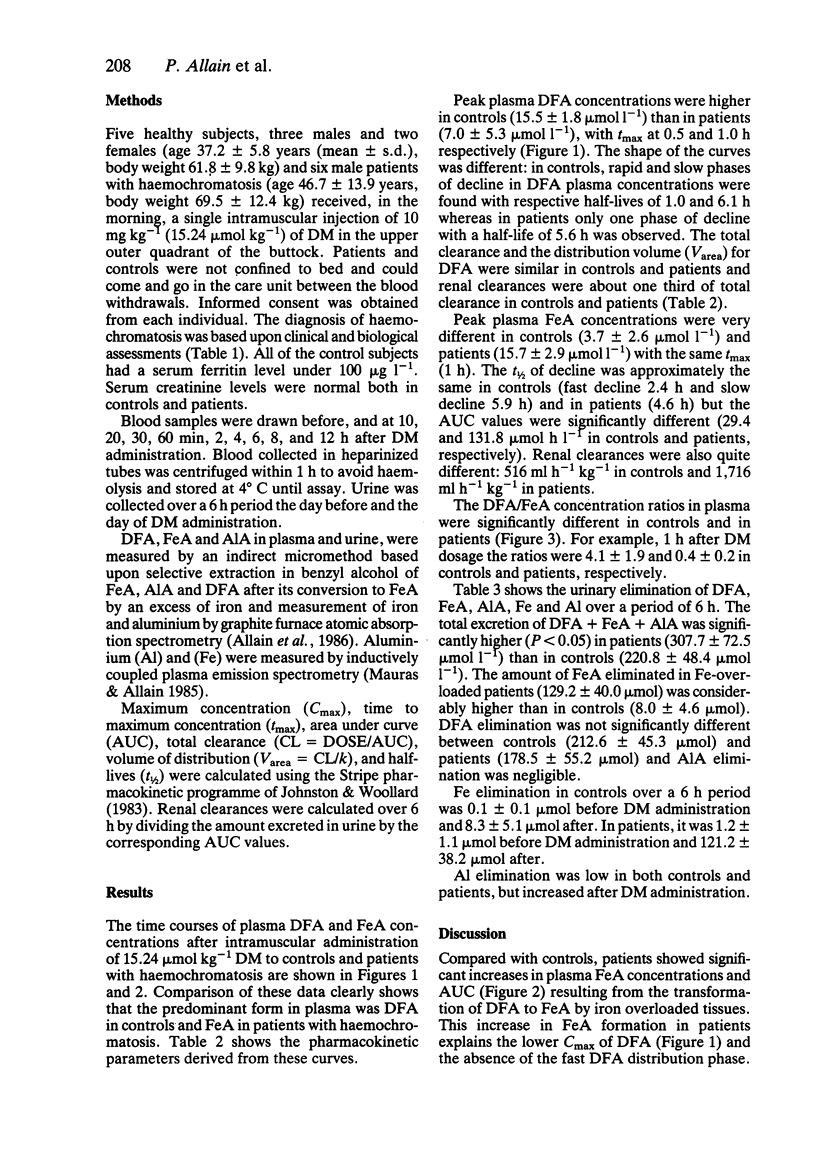
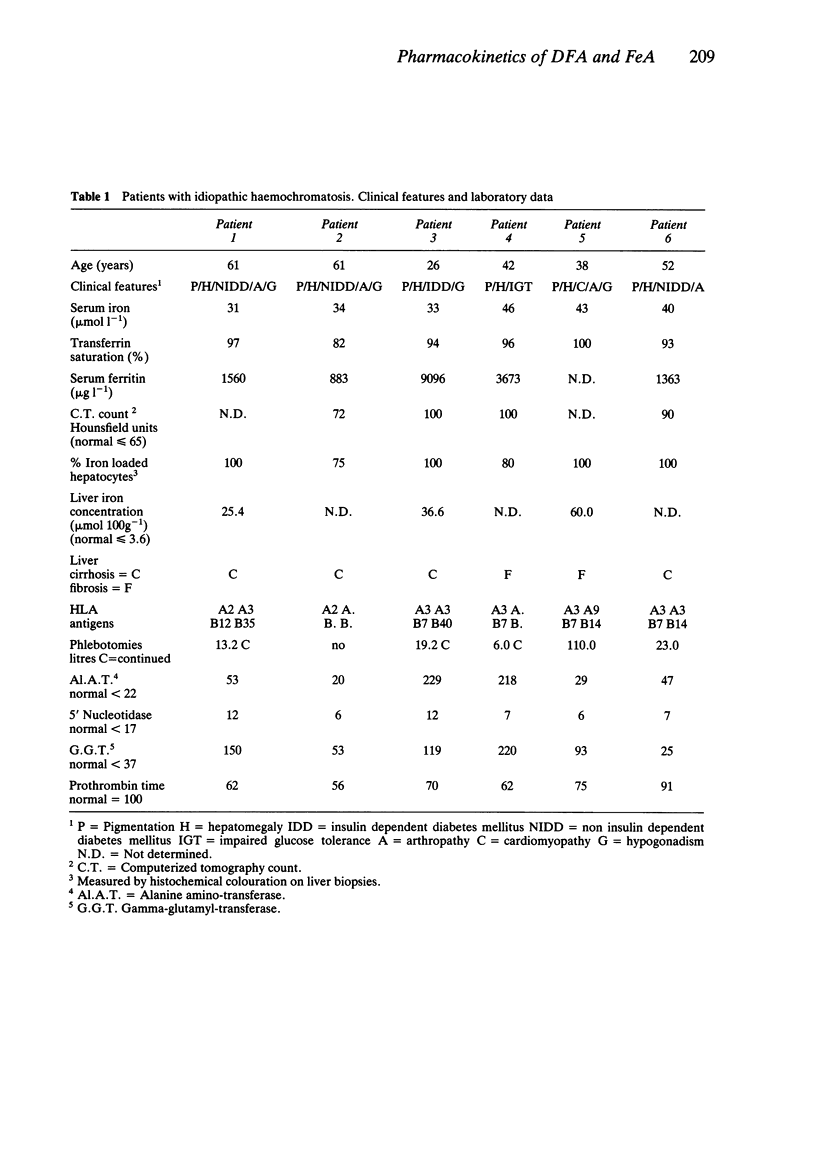
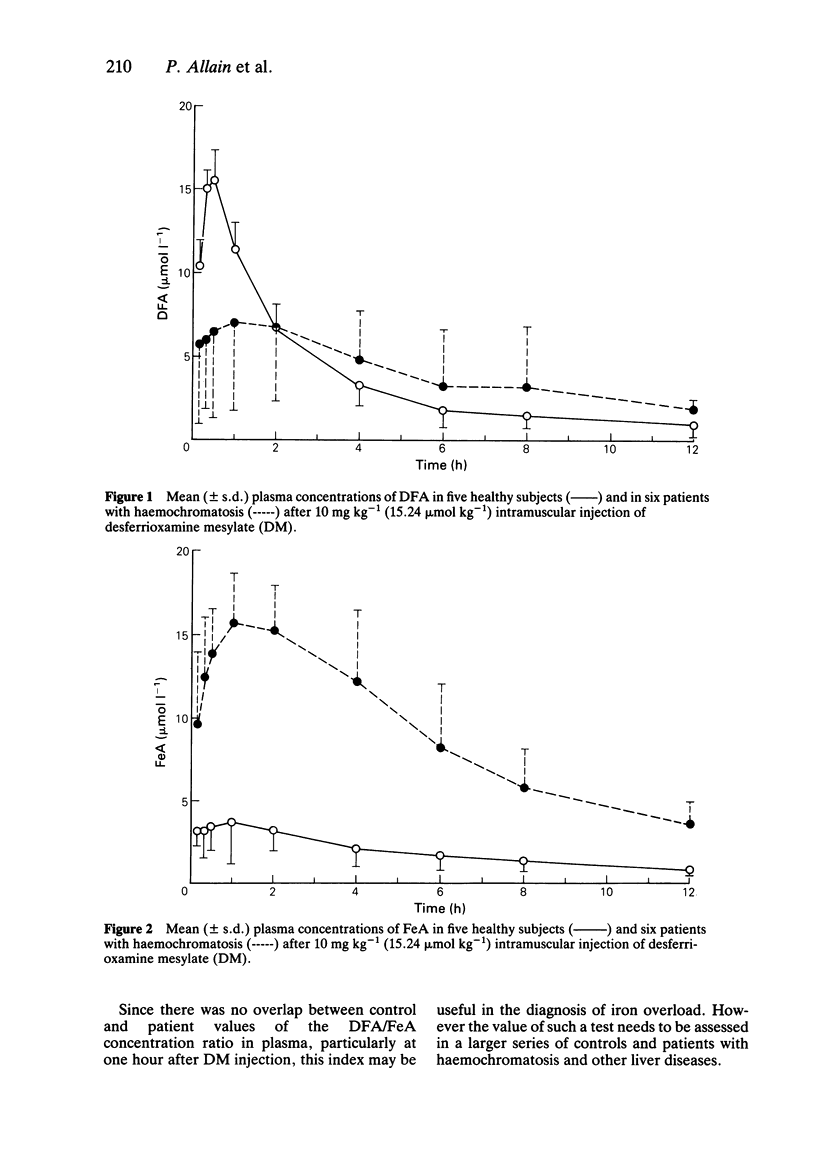
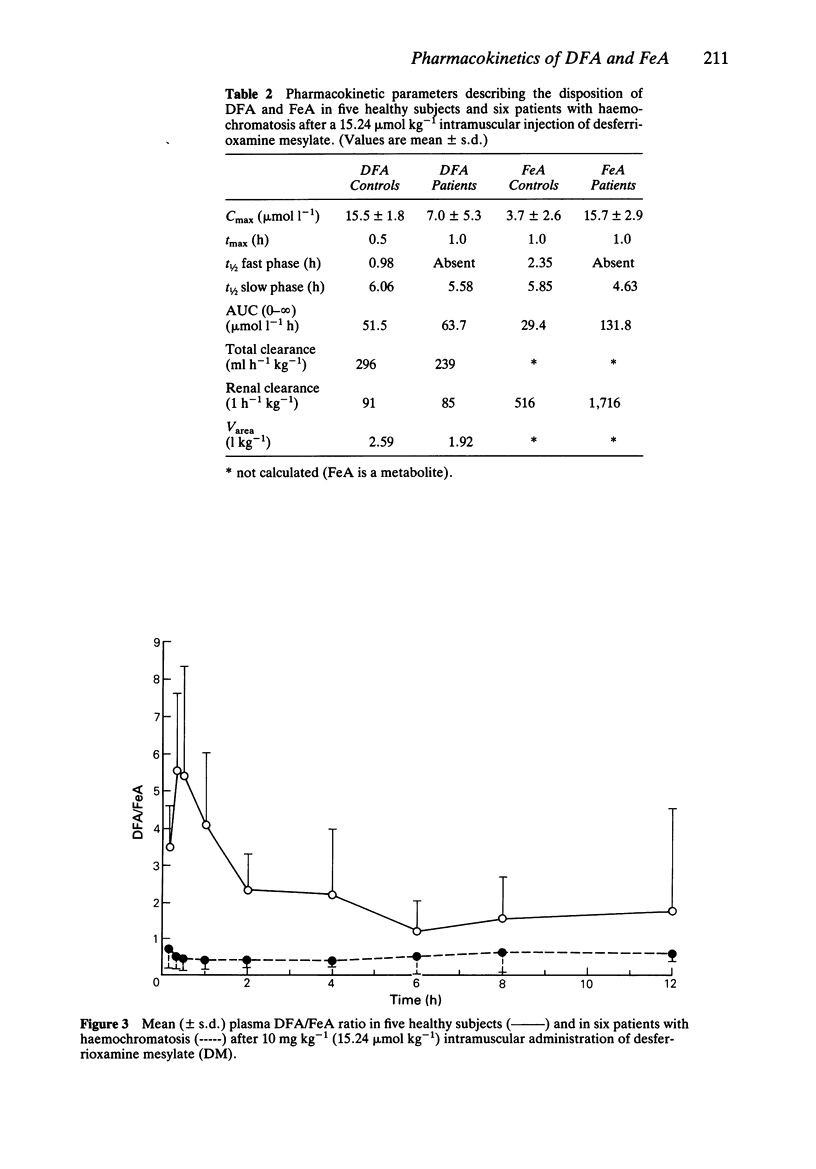
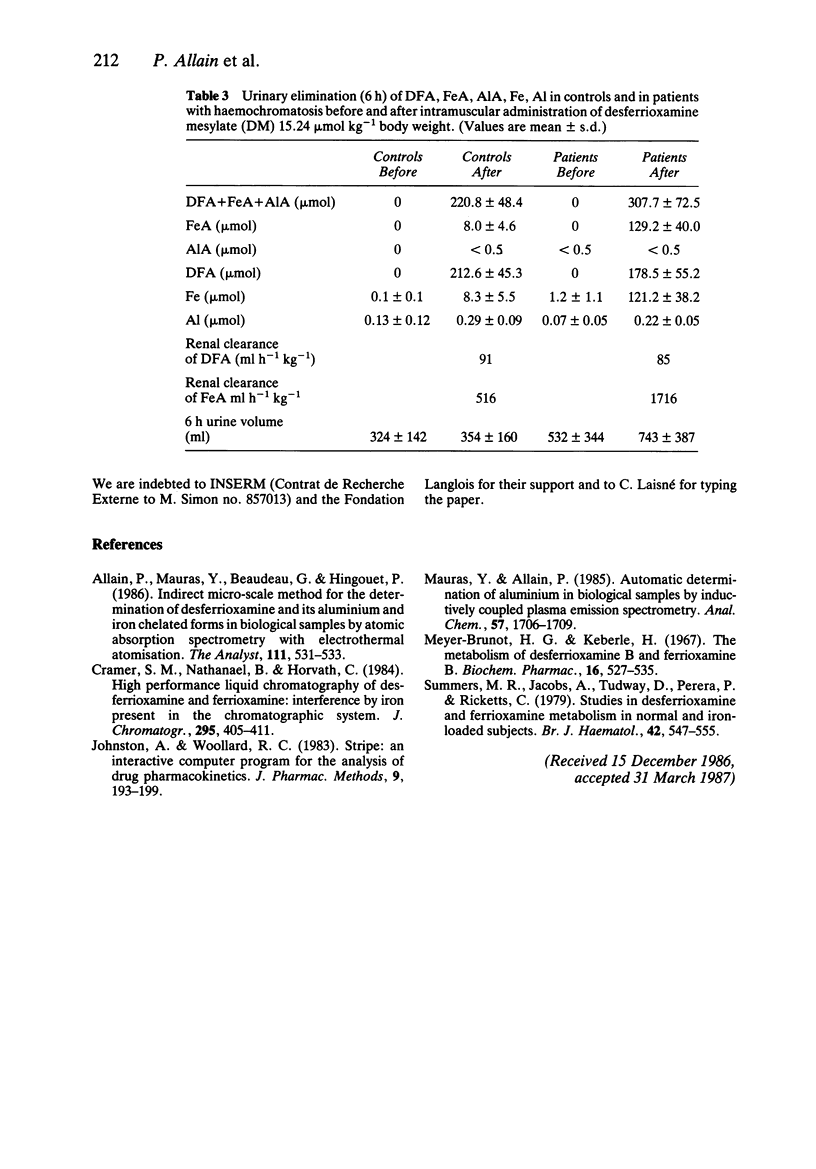
Selected References
These references are in PubMed. This may not be the complete list of references from this article.
- Allain P., Mauras Y., Beaudeau G., Hingouet P. Indirect micro-scale method for the determination of desferrioxamine and its aluminium and iron chelated forms in biological samples by atomic absorption spectrometry with electrothermal atomisation. Analyst. 1986 May;111(5):531–533. doi: 10.1039/an9861100531. [DOI] [PubMed] [Google Scholar]
- Cramer S. M., Nathanael B., Horváth C. High-performance liquid chromatography of deferoxamine and ferrioxamine: interference by iron present in the chromatographic system. J Chromatogr. 1984 Jul 20;295(2):405–411. doi: 10.1016/s0021-9673(01)87642-1. [DOI] [PubMed] [Google Scholar]
- Johnston A., Woollard R. C. STRIPE: an interactive computer program for the analysis of drug pharmacokinetics. J Pharmacol Methods. 1983 May;9(3):193–199. doi: 10.1016/0160-5402(83)90038-4. [DOI] [PubMed] [Google Scholar]
- Meyer-Brunot H. G., Keberle H. The metabolism of desferrioxamine B and ferrioxamine B. Biochem Pharmacol. 1967 Mar;16(3):527–535. doi: 10.1016/0006-2952(67)90100-1. [DOI] [PubMed] [Google Scholar]
- Summers M. R., Jacobs A., Tudway D., Perera P., Ricketts C. Studies in desferrioxamine and ferrioxamine metabolism in normal and iron-loaded subjects. Br J Haematol. 1979 Aug;42(4):547–555. doi: 10.1111/j.1365-2141.1979.tb01167.x. [DOI] [PubMed] [Google Scholar]


